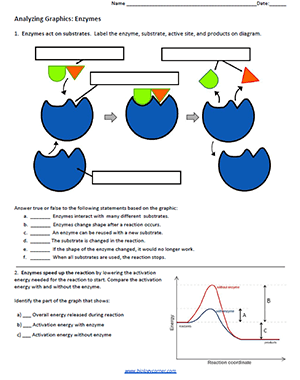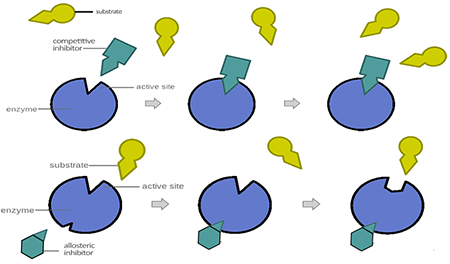
Energy is a one of the “Big Ideas” of AP Biology and is also included in the Next Generation Science standards. Students don’t usually learn about the laws of thermodynamics until they take chemistry of physics. Though students in biology classes may encounter this topic in cellular metabolism units.
Beginning biology students can become overwhelmed if too much emphasis is placed on the chemistry. I’ve found that even my freshman can grasp the basic concepts of enzymes, substrates and activation energy.
Enzymes are proteins that speed up chemical reactions in the body. They do this by lowering the activation energy required for the reaction to occur. Enzymes are specific to the substrate they interact with. This worksheet reinforces the concepts of enzyme-substrate interactions.
You can also explore enzymes in the lab. A popular enzyme lab in my Bio class involves putting hydrogen peroxide on liver and observing the bubbles, which are the products.
Enzymes in AP Biology
AP Biology classes must go into more detail about reaction rates and how enzymes work at optimal temperatures and ph. For those classes, I use lactase as a focus enzyme as students explore the properties of enzymes. HHMI has excellent resources on human evolution and lactase persistence.
First, students label the enzyme, substrate, active site, and products. Then they view a graph showing energy changes with and without an enzyme, revealing how enzymes lower activation energy. Students also examine a graph showing the optimal pH of pepsin and lipase. Finally, a graphic illustrates how competitive inhibition and allosteric inhibition can reduce the speed of enzymatic reactions.


